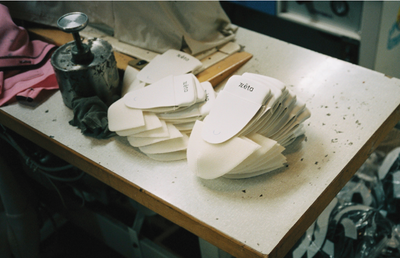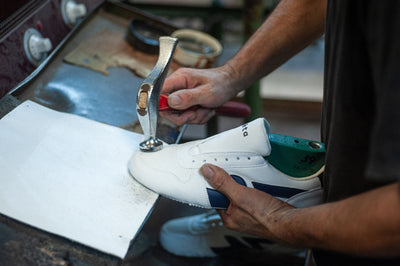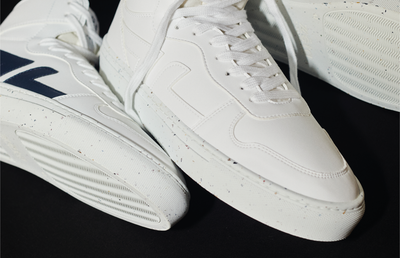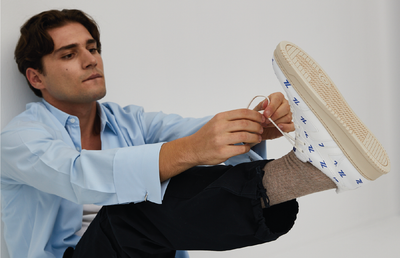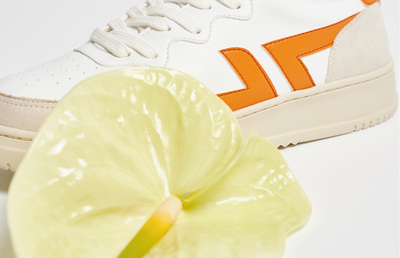5 sustainable actions to adopt to fight against fast-fashion
Laure Babin
Share
Today, 2.5 billion textiles are sold every year in France. This sector generates many jobs in the world but it is one of the most polluting for the planet. The fashion industry emits 1.2 billion tons of greenhouse gases per year, even more
Beyond the environmental problems that this industry causes, there is also the question of ethics for workers. Brands prefer to produce cheaply in foreign countries without worrying about the conditions of employees who work in opaque conditions.
You will understand, the fashion industry is turning upside down and it's time to change things! As a consumer, you can be part of the change and change your habits to change the lines. Zèta is committed to offering you eco-responsible products made with respect for people and animals. What if we helped you adopt 5 sustainable actions to fight against fast-fashion?
1- Turn to more ethical and committed brands
Many brands are playing the transparency card and offering more eco-friendly products. If you're not sure which brand to choose, look to sites that bring together ethical and sustainable brands like WeDressFair or HonestMind.
How to spot a brand with ethical commitments?
- Take a look at the brand's website and identify its commitments and values
- Keep an eye on the country of manufacture and the working conditions of the workers (standards, certifications)
- Watch brand news on social media
Focus on transport and manufacturing
Read your labels to find out where your clothes are made. Some Asian countries specialize in the manufacture of textiles and clothing at very competitive prices. Brands do not hesitate to order from these suppliers instead of producing in Europe for economic reasons.
Did you know? Some brands renew their collection up to 24 times in 1 year. The repatriation of these clothes to the shops via transport has a considerable impact on the increase in greenhouse gases.
So prefer brands working in a short circuit and close to your place of residence. At Zèta, for example, we produce in Portugal and ship the shoes exclusively to Europe to limit our carbon footprint.
Some ethical brands to complete your wardrobe:
Hopaal, Colorful Standard, Ribbed
2- Pay attention to the choice of materials
Synthetic materials and especially polyester is the most used material in the world of fast-fashion. Today, approximately 70% of synthetic fibers come from petroleum. In addition,
Animal materials such as leather, wool or silk are also highly coveted but often at the cost of mistreatment or intensive farming. We therefore prefer recycled or synthetic furs and we prefer shoes made of recycled material.
Today, there are alternatives such as natural materials that consume little water such as linen or hemp, eco-responsible materials or recycled materials.
Also be careful with plant materials such as cotton, a highly coveted but also very controversial world star Indeed, to grow cotton you need a good dose of pesticide and large quantities of fresh water.
Many dyes are also used to give color to clothing. However, all products are laundered before receiving their final color which has an added impact. Be sure to wash your clothes before wearing them to avoid any risk of allergy. Prefer clothes dyed from plants or with an eco-label prohibiting the use of chemical substances. We rely on certain labels such as European Ecolabel, Ecocert Textil, Demeter, GOTS, BioRé, Oeko - Tex Standard 100.
Many certifications exist in the textile sector. Getting informed and identifying brands with these certifications allows you to have a first view of your commitments.
Be careful, a brand without certification does not mean that it is not committed. Smaller brands don't necessarily have the means to afford labels. Conversely for labeled brands, be well informed about the meaning of these labels and all other aspects of the brand.
Zoom in on recycled materials
At Zèta, we are followers of recycled materials for the manufacture of our products. Using recycled materials makes it possible to revalorize the existing and not to create new materials. The manufacturing processes are also far less polluting. The bonus? Our recycled materials are also recyclable. Enough to give several lives to the material and avoid overproduction.
3- Give your clothes a second life
Few clothes are biodegradable and some cannot be recycled. The composition of the products is very diverse and the manufacturing complex due to the different processes used which require chemical transformations. So how do you give your clothes a second life?
First of all, you have to take care of your clothes to be able to keep them over time. Repair your slightly damaged clothes. Sometimes it just takes a stitch, a visit to the shoemaker or the seamstress to give them a boost. Upcycling is also very trendy at the moment. If you're good with your hands, go for it! The internet is a gold mine for finding tutorials to transform your clothes.
If however you no longer want to wear your clothes, donate them to friends or associations like Emmaüs. Also use platforms to sell your clothes like Vinted. If you have some time ahead of you, why not take part in a flea market to sell your last pieces.
Finally, recycle your clothes by dropping them off at recycling stations. Be careful though, the sorting centers are overwhelmed. In France, we lack centers specializing in textiles. Most of your clothes end up in rag and very few are reused in the creation of a new material.
So ask yourself before buying a piece of clothing: Am I really going to use it? Do I really need it?
4- Turn to the second hand
Turning to second-hand makes it possible to participate in a circular economy in order to combat over-consumption of clothing. It is also making a gesture for the planet. The product you are looking for probably already exists. So, let's go to the local thrift store!
The Vinted app is a real second-hand war machine. It connects buyers and sellers of second-hand clothes.
How to find the rare pearl on Vinted?
It is better to have an idea in mind of the item you want to find It is better to use the filters by selecting brands, the maximum price you want to put, the size, the color and the condition of the item.
Don't forget to save your searches and turn on notifications to see what's new. Subscribe to accounts for Vinted to refine its search suggestions.
As this is no longer a new product, the price of the clothes is therefore much reduced and is more accessible. The opportunity to save money too!
5- Consuming less but better
On average, a person buys 60% more clothes than 15 years ago and keeps them for half as long according to the ADEME study. We know you fashion addicts, hard to resist in the face of all these offers! So, we don't rush but we take the time to choose. What piece is missing from my wardrobe? How am I going to combine the garment? What materials are used? Does the cut suit me? We prefer raw jeans to ripped or faded jeans, we try to choose timeless products of good quality that can easily find a buyer.
Difficult to be perfect and to respect all these parameters as a consumer. It's not all on your shoulders, but there are plenty of ways to limit your environmental impact and dress better by polluting less!
And above all, don't forget: the clothes that pollute the least are the ones you don't buy!
.

